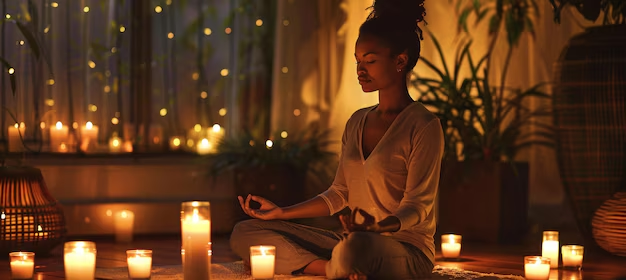Yoga Poses To Try For Anxiety
Published On : 10th Dec 2024
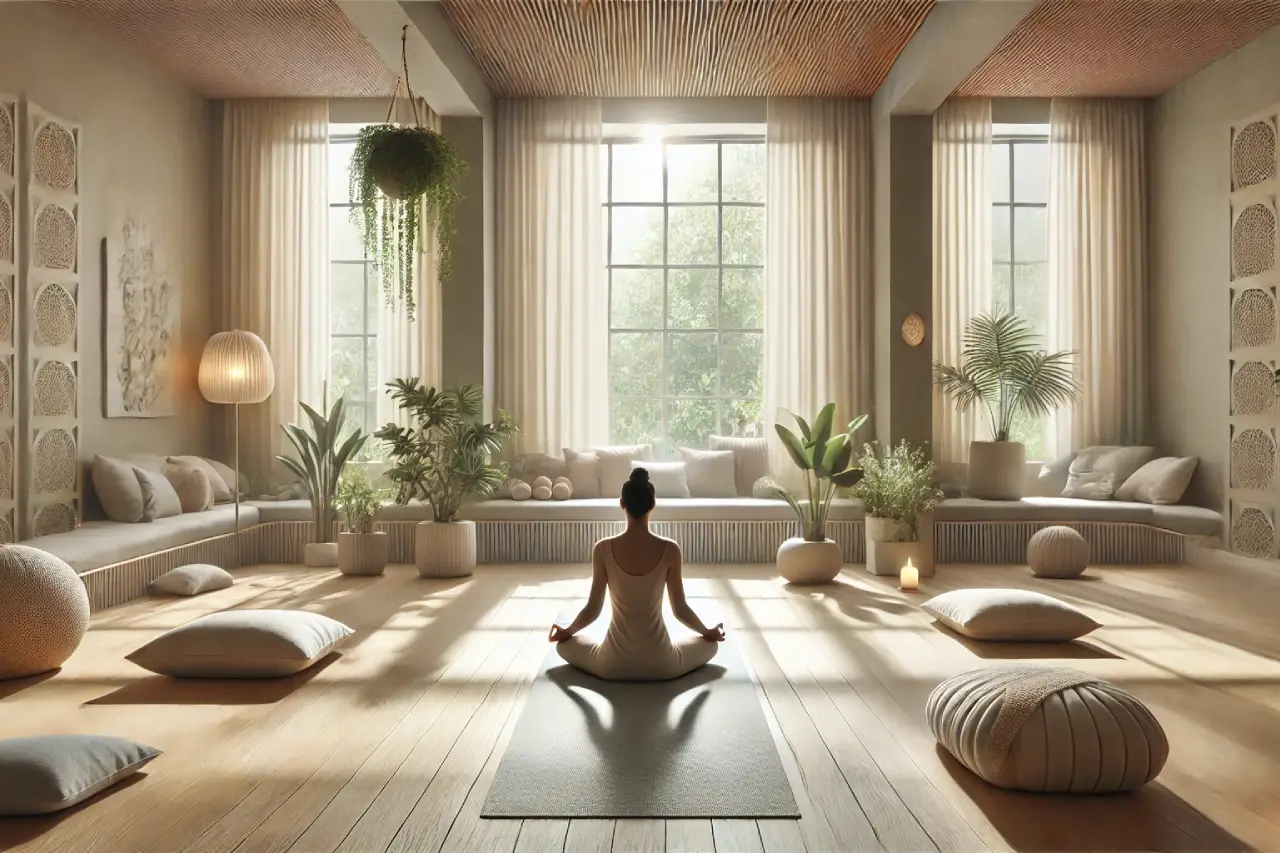
Yoga can be a powerful tool to manage anxiety by promoting relaxation and mindfulness. These poses can be practiced individually or as part of a full yoga sequence designed to calm the body and mind.
Understanding Anxiety and the Role of Yoga
Anxiety is a common mental health condition that can affect people of all ages. It manifests as excessive worry, nervousness, or fear, which can interfere with daily life. While there are various treatment options available, yoga offers a holistic approach that not only targets the body but also the mind and spirit.
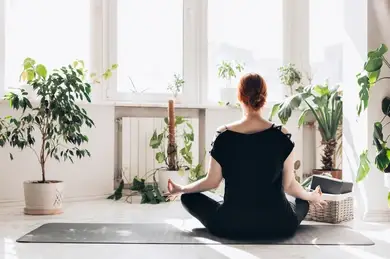
Yoga has long been known for its ability to promote relaxation and mindfulness, making it an effective tool for managing anxiety. Through a combination of mindful breathing, gentle movements, and relaxation techniques, yoga helps reduce the physical and mental symptoms associated with anxiety.
Yoga Poses for Anxiety Relief
Introduce a few simple yoga poses to get started with:
-
Child’s Pose (Balasana): It is a deeply restful and grounding yoga posture, often used to relax and rejuvenate the body and mind. It is commonly practiced during yoga sessions as a resting pose or to reset the body between more challenging poses.
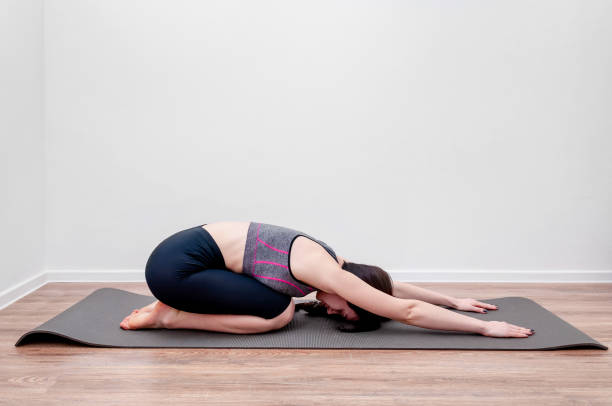
- Kneel on the floor, keeping your knees apart and hips resting on your heels.
- Lower your torso forward, bringing your forehead to the floor (use a cushion if needed).
- Extend your arms forward on the mat with palms facing down, or rest them alongside your body with palms up.
- Relax your body, letting your hips drop toward your heels and your chest melt toward the floor.
- Breathe deeply, holding the pose for 30 seconds to a few minutes.
This pose helps to release tension and calm the mind, making it perfect for relieving stress and anxiety.
You can also refer to the help video link of this pose/asana, Here.
-
Downward-Facing Dog (Adho Mukha Svanasana): It is an iconic yoga pose that stretches and strengthens the body while promoting relaxation.
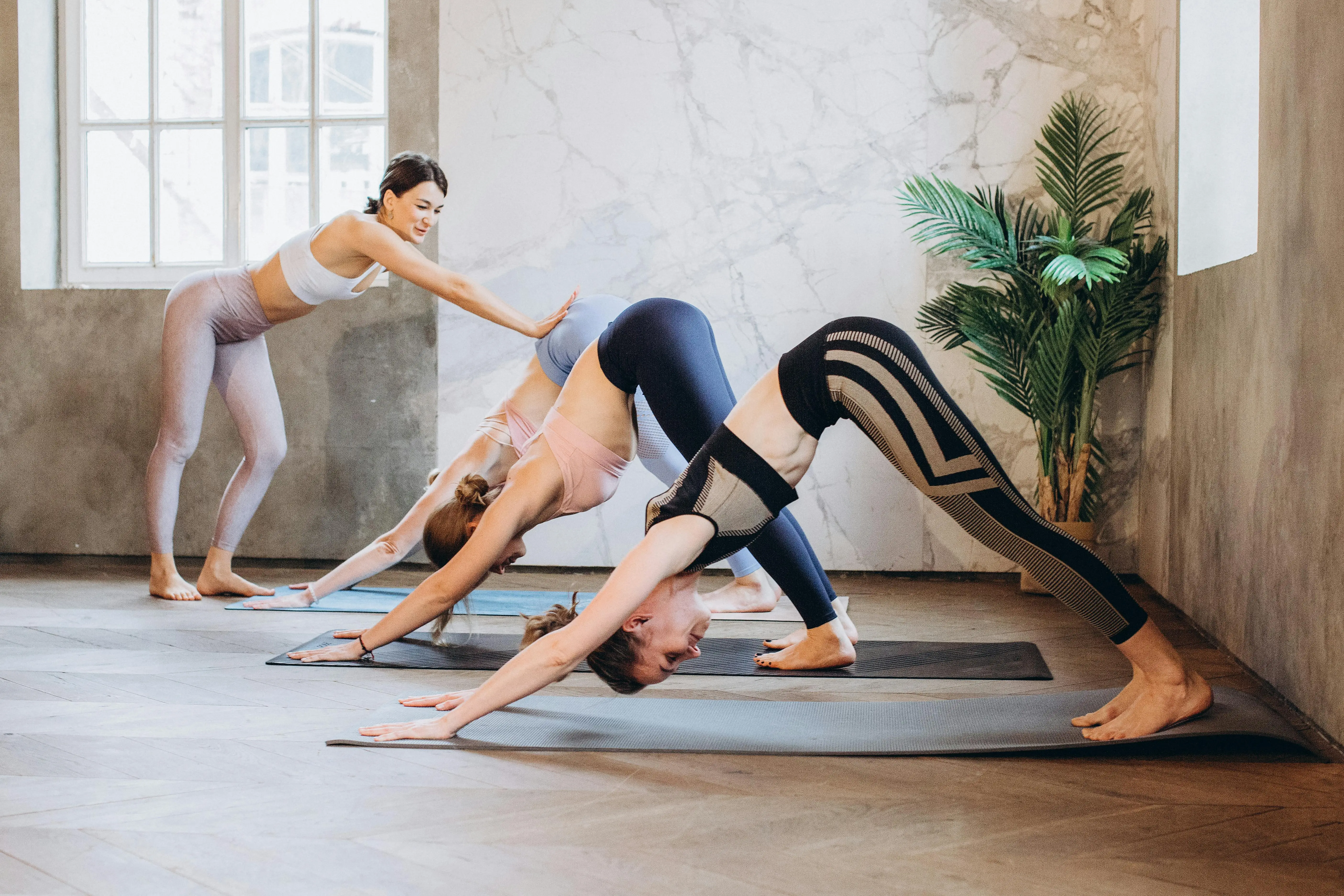
- Start in a tabletop position on your hands and knees, with wrists under shoulders and knees under hips.
- Lift your hips up and back, forming an inverted V-shape. Keep your feet hip-width apart and your hands shoulder-width apart.
- Press your palms into the mat, spreading your fingers wide. Press your heels toward the floor, aiming to straighten your legs (it’s okay if your heels don’t touch).
- Relax your head between your arms, with your ears aligned with your upper arms. Gaze towards your legs or navel.
- Hold for 15 seconds to a minute, breathing deeply, and then slowly lower back to the tabletop position.
This pose is great for increasing flexibility and building strength while promoting mental clarity.
You can also refer to the help video link of this pose/asana, Here.
-
Cat-Cow Pose (Marjaryasana-Bitilasana): It is a dynamic yoga sequence that flows between two poses to stretch and strengthen the spine, improving flexibility and relieving tension.
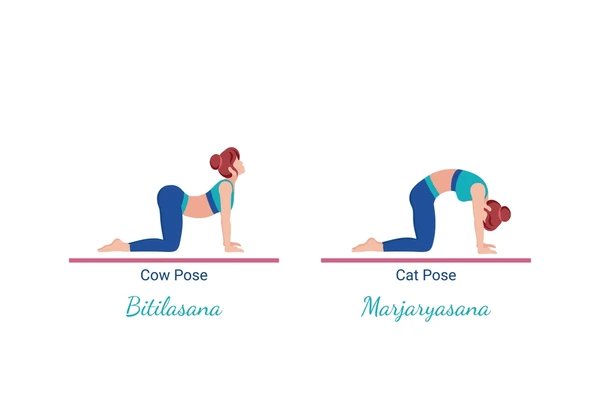
- Start in a tabletop position, with your hands under your shoulders and knees under your hips.
- Inhale into Cow Pose (Bitilasana):
- Drop your belly toward the mat, lift your chest and tailbone, and gaze slightly upward.
- Arch your back gently, creating a curve in your spine.
- Exhale into Cat Pose (Marjaryasana):
- Round your back toward the ceiling, tucking your chin toward your chest.
- Draw your belly button toward your spine and press into your hands and knees.
- Flow Between Poses: Continue to flow back and forth, inhaling into Cow Pose and exhaling into Cat Pose, moving with your breath.
This pose is great for warming up the spine, releasing stress, and improving posture.
You can also refer to the help video link of this pose/asana, Here.
-
Legs Up the Wall Pose (Viparita Karani): It is a restorative yoga pose that helps to relax the body and calm the mind. It’s known for its ability to reduce stress and promote circulation.
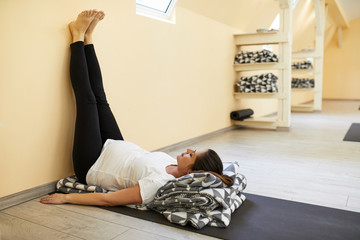
- Find a wall space and sit with one side of your body against it.
- Lie on your back and slowly swing your legs up the wall, keeping your hips as close to the wall as possible. Your legs should be extended vertically, and your feet should be relaxed.
- Adjust your position so that your head, neck, and spine are comfortably aligned on the floor. If needed, place a cushion or folded blanket under your hips for extra support.
- Relax your arms by your sides, with palms facing up, or place them on your belly or chest.
- Breathe deeply and hold the pose for 5-15 minutes, allowing your body to fully relax.
This Pose is an excellent way to relax after a long day, helping to soothe both the body and mind.
You can also refer to the help video link of this pose/asana, Here.
-
Standing Forward Bend (Uttanasana): It is a simple yet effective yoga pose that stretches the hamstrings, calves, and back while calming the mind.
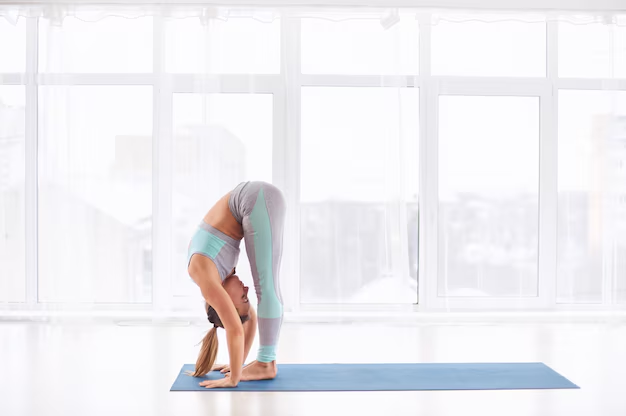
- Start in Mountain Pose (Tadasana), standing tall with your feet hip-width apart and your arms by your sides.
- Inhale to lengthen your spine, reaching through the crown of your head.
- Exhale and slowly fold forward at your hips, keeping your spine straight as you lower your torso toward your legs.
- Bend your knees slightly if necessary to avoid straining your back or hamstrings. Your hands can rest on the floor, on your legs, or on a block for support.
- Relax your head and neck, letting them hang heavy toward the floor, and keep your gaze directed toward your knees or the ground.
- Stay in the pose for 15 seconds to a minute, then gently come up, rolling your spine up slowly, one vertebra at a time.
This pose is a great way to release physical tension and calm your nervous system.
You can also refer to the help video link of this pose/asana, Here.
-
Tree Pose (Vrksasana): It is a standing balance pose that helps improve focus, stability, and strength while grounding the body and calming the mind.
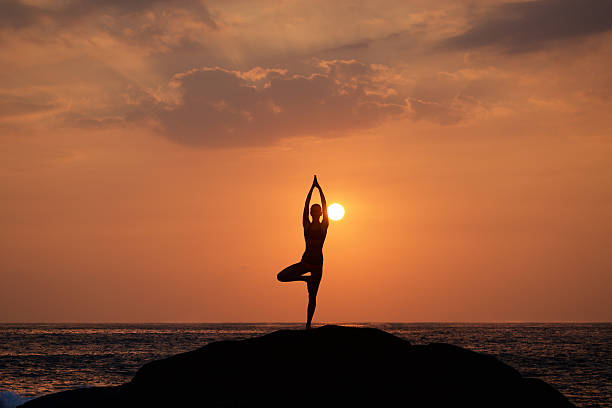
- Start in Mountain Pose (Tadasana), standing tall with your feet hip-width apart and your arms by your sides.
- Shift your weight onto your left foot, rooting it firmly into the ground.
- Lift your right foot off the floor and place it on the inner left thigh, calf, or ankle (avoid the knee). Keep your toes pointing down.
- Bring your hands together in prayer at your chest or extend your arms overhead with palms facing each other.
- Find a focal point (drishti) to help maintain balance. Engage your core and keep your body aligned.
- Hold the pose for 15 seconds to a minute, then gently release and switch sides.
This pose is great for building physical and mental stability, helping to cultivate a sense of calm and presence.
You can also refer to the help video link of this pose/asana, Here.
-
Seated Forward Bend (Paschimottanasana): It is a calming yoga pose that stretches the entire back of the body, from the spine to the hamstrings, while promoting relaxation and mental clarity.
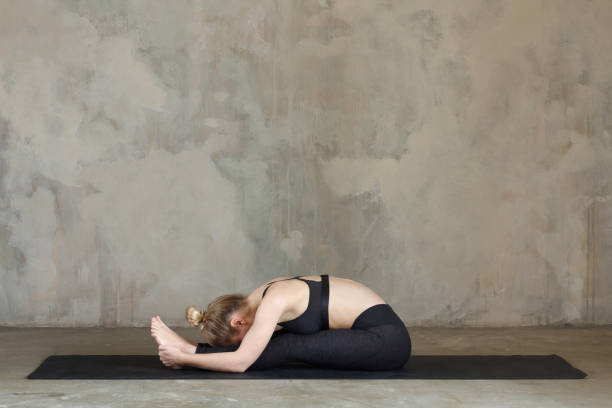
- Sit on the floor with your legs extended straight in front of you, keeping your feet flexed and together.
- Inhale to lengthen your spine and sit up tall.
- Exhale and slowly hinge at your hips, reaching your chest forward toward your legs while keeping your spine long.
- Reach your hands to grab your feet, ankles, or shins, depending on your flexibility. Avoid rounding your back—focus on extending your torso forward.
- Relax your head and neck, letting them gently hang toward your legs.
- Hold the pose for 30 seconds to a minute, breathing deeply and allowing your body to relax into the stretch.
- To come out, slowly lift your torso back up on an inhale, stacking your spine one vertebra at a time.
This pose is an excellent pose to incorporate into a practice for releasing tension and promoting deep relaxation.
You can also refer to the help video link of this pose/asana, Here.
-
Corpse Pose (Savasana): It is is a restorative and deeply relaxing pose typically practiced at the end of a yoga session. It allows the body to absorb the benefits of the practice while promoting deep relaxation and mindfulness.
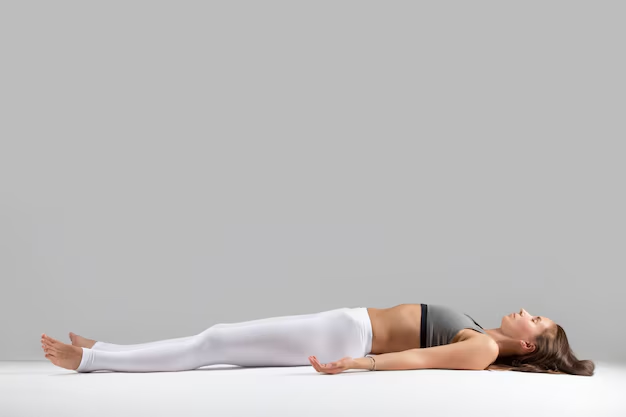
- Lie on your back on a yoga mat, with your legs extended comfortably apart and your arms resting by your sides, palms facing up.
- Let your feet naturally fall open, with the toes pointing outward.
- Close your eyes and focus on your breath, allowing it to become slow and deep.
- Relax your body, consciously releasing any tension in your face, shoulders, arms, chest, belly, and legs.
- Focus on each breath, allowing your body to feel heavier with each exhale, sinking deeper into the mat.
- Stay in the pose for 5-20 minutes, depending on how long you wish to rest.
- To come out of the pose, gently begin to deepen your breath, wiggle your fingers and toes, and slowly roll to your right side. When you feel ready, sit up gently.
This pose is often considered one of the most important poses in yoga because of its ability to promote profound relaxation, making it ideal for reducing tension and anxiety.
You can also refer to the help video link of this pose/asana, Here.
Key Yoga Principles for Anxiety Relief
Yoga is a powerful tool for managing anxiety, as it combines physical movement, breathwork, and mindfulness to calm both the body and the mind. By incorporating certain yoga principles into your practice, you can create a sense of balance, inner peace, and emotional resilience.
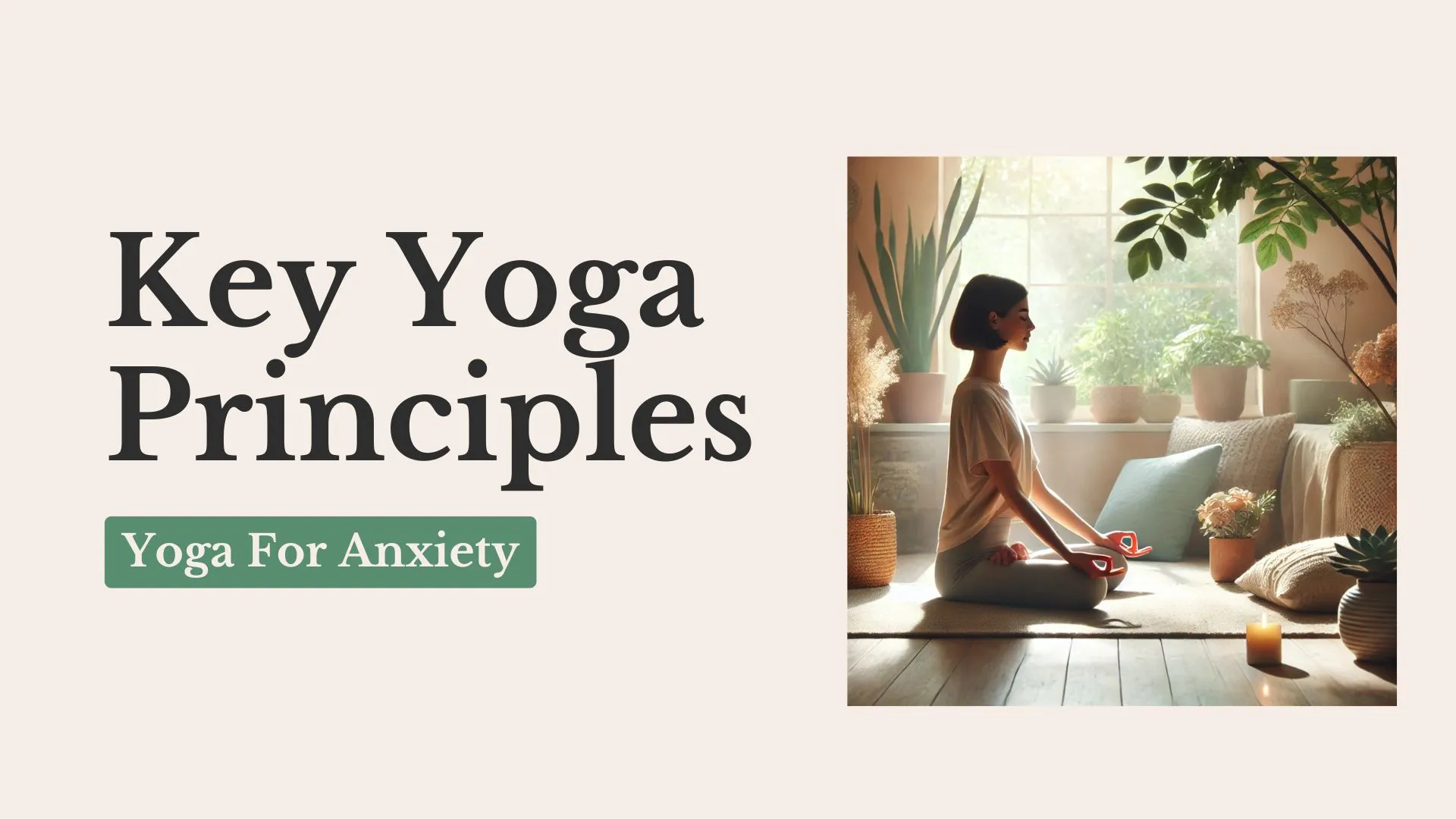
-
Breath Awareness: Deep, conscious breathing is central to yoga practice and helps activate the relaxation response. Focus on slow, deep breaths to calm the mind and body.
-
Mindfulness: Yoga encourages living in the moment. By paying attention to sensations, thoughts, and emotions, you can reduce the cycle of worrying about the past or future.
-
Gentle Movement: Unlike intense workouts, yoga poses for anxiety are typically slow, controlled, and restorative. This helps the body relax, which in turn calms the mind.
-
Restorative Poses: Poses that are held for longer periods help trigger the parasympathetic nervous system and allow for deeper relaxation.
How to Make Yoga a Regular Part of Your Anxiety Management
Building a yoga practice can take time, but consistency is key. Here are some tips for making yoga a regular part of your anxiety management routine:
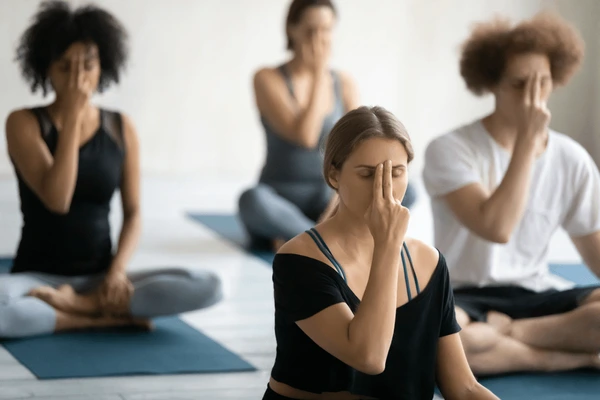
-
Set aside dedicated time: Find a time each day when you can practice yoga, even if it’s just for 10-15 minutes.
-
Create a calming environment: Light candles, use essential oils, or play soft music to enhance the calming atmosphere.
-
Be gentle with yourself: Remember that yoga is not about perfection. The goal is to practice mindfulness and self-compassion, not to achieve specific poses.
Conclusion: Embrace the Healing Power of Yoga
Yoga offers a sanctuary for those looking to manage anxiety in a natural, holistic way. By focusing on breath, movement, and mindfulness, yoga can help create a sense of inner peace and resilience against stress. Whether you’re new to yoga or a seasoned practitioner, incorporating these practices into your routine can be a valuable tool in managing anxiety and fostering overall mental well-being.
